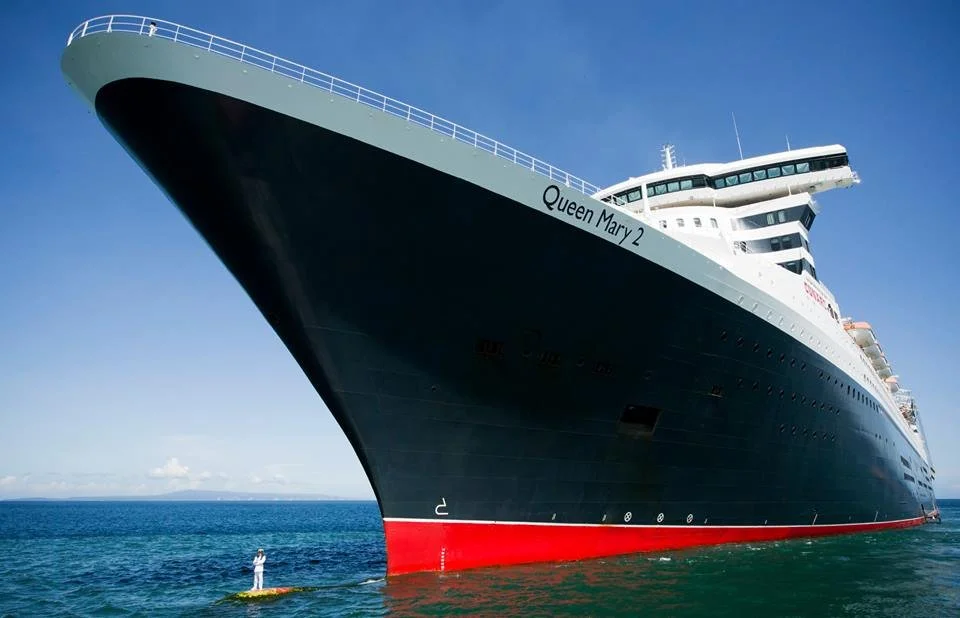Remarkable image of a ship nearly hitting a Norwegian house
Last week, the owner of this house was sleeping in the room with the curtains when a 443 ft, 11,000 ton coastal container ship plowed into his side yard at 16 knots due to the helmsman falling asleep at the wheel. It didn’t wake up the homeowner. A few days later, the ship was towed off the land with no apparent damage to anything.
So, what is that great, red, fat thing on the bow of the ship? …. you might ask.
A large, bulbous structure is routinely built into the bow most large vessels because it causes a premature bow wave that allows the ship to cut through the water with less energy, saving up to ten percent on fuel.
Another bulb-bow example is this photo of the Captain of the “Queen Mary 2" standing on the bulb that extends from his ship (which is temporarily floating high in the water due to the ship being empty of fuel and passengers during routine maintenance of the hull). Note the lower-case, white “d” painted on the bow to warn small boats in the harbor not to cross too close to the bow and hit the submerged bulb.
Here is another of my favorite images, by the way. Enjoy.
Just below is a very brief explanation of how a protruding bulb works to reduce the ship's bow wave and the wake left behind. As an easy to understand explanation of why this is important, consider that a small boat moving across, say, a pond has a big bow wave and leaves a continuous wake of two waves spreading out behind the stern. A considerable part of the fuel used to cross the pond is wasted moving a large amount of water up and down to build that wake. No one wants that.










